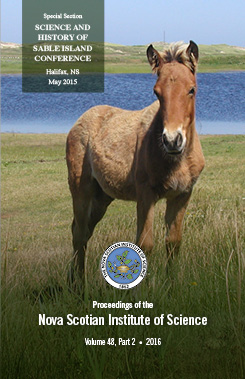Enabling high-accuracy, position monitoring of Sable Island through the Nova Scotia Coordinate Referencing System
DOI:
https://doi.org/10.15273/pnsis.v48i2.6659Abstract
Since 1968, the Province of Nova Scotia has carried out a mandate of providing coordinate referencing infrastructure for its citizens. The current infrastructure is known as the Nova Scotia Coordinate Referencing System (NSCRS) and allows property boundaries, engineering works, and natural features to be spatially related within the Province, including Sable Island. Traditionally, thousands of survey monuments across the Province provided access to the coordinate referencing system for surveying and engineering work. Of the original 23,000 monuments installed in the 1970s and 1980s, many have been destroyed by natural occurrences or human activities. In the case of Sable Island, most have been enveloped by sand or the sea. In 2013, the Province began implementing a modernized strategy for delivering coordinate referencing services to its citizens using permanent GPS stations. This technology was installed at Main Station on Sable Island in June of 2014. This GPS infrastructure has already had a positive impact by:
a)Allowing, for the first time, the three dimensional position of Sable Island (specifically Main Station) to be monitored with millimeter level accuracy
b)Enabling Light Detection and Ranging (LiDAR) and aerial photography surveys to be consistently referenced within a global reference frame; and
c)Providing quick and accurate positioning of natural features around the island with millimeter level accuracy and consequently enabling long term, position trends of these features (e.g., Bald Dune) to be determined.
Each of these topics is discussed and a history of the NSCRS on Sable Island is presented.


